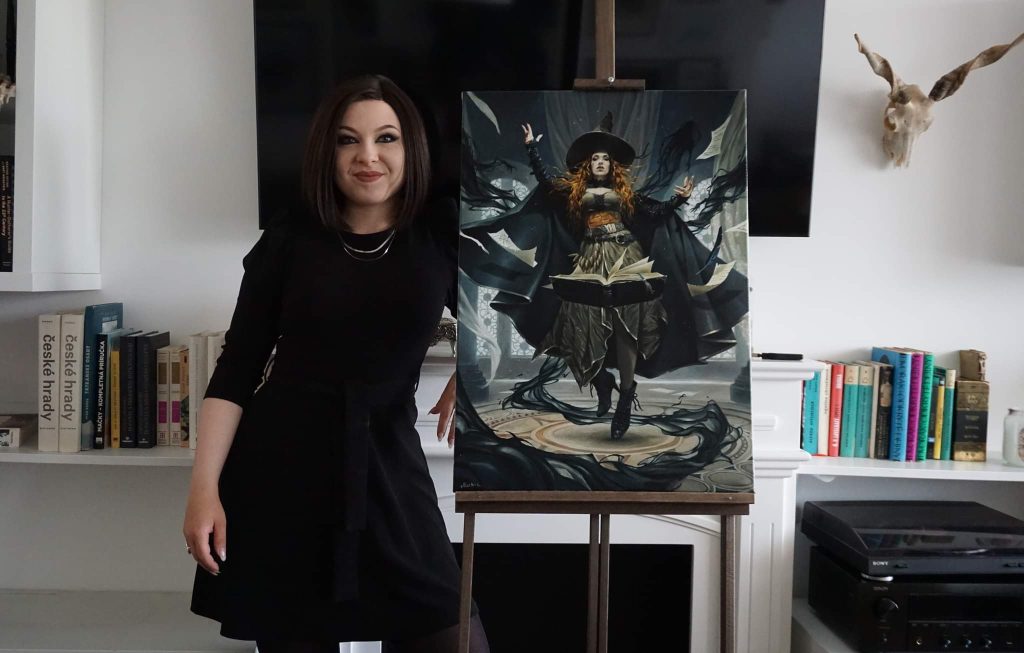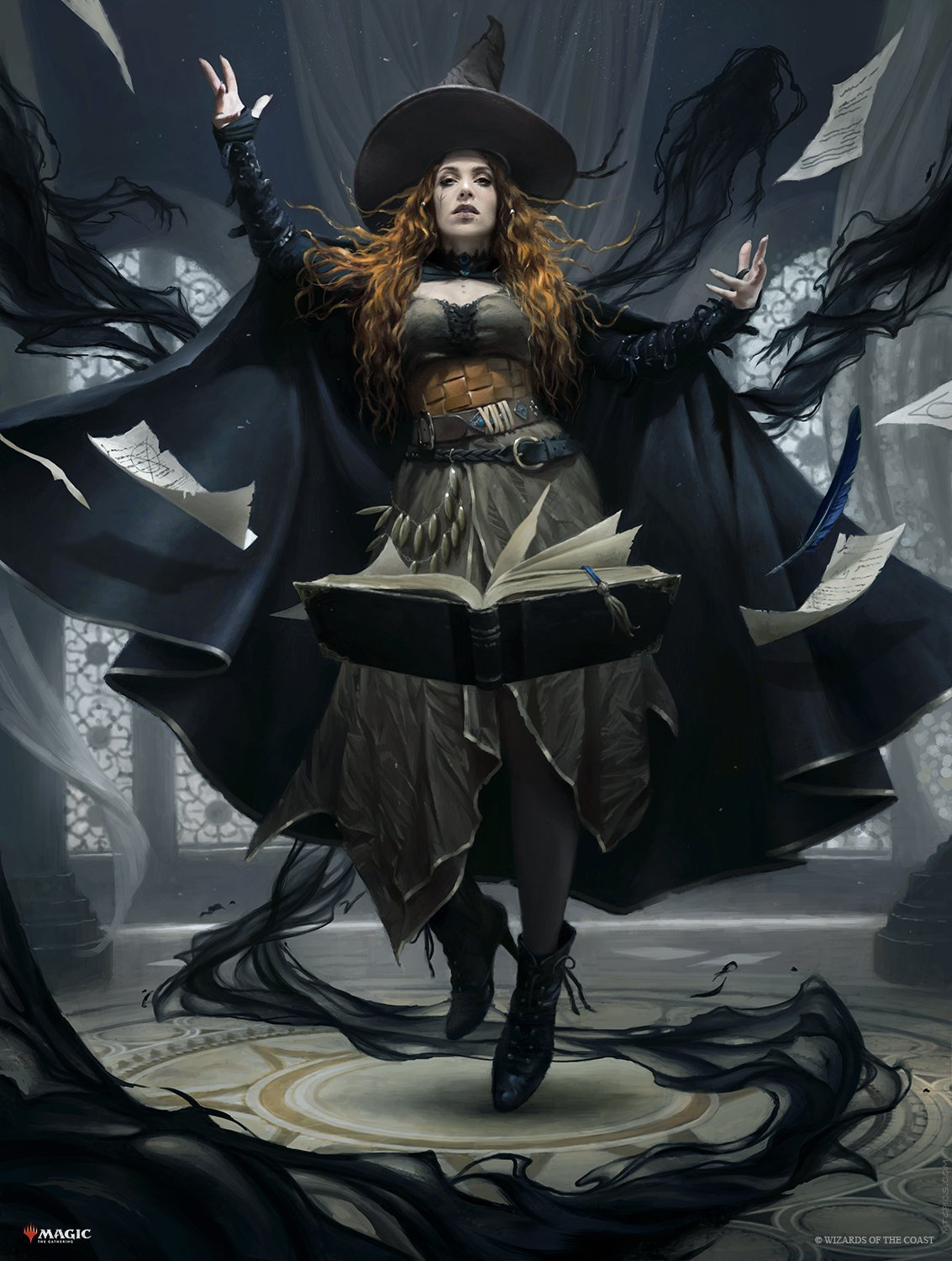One of the most talked about illustrations from Commander Legends: Battle for Baldur’s Gate has been the depiction of Tasha — a fan favorite from Dungeons & Dragons — by Martina Fačková. Tasha received the planeswalker treatment in Magic: The Gathering’s latest set and Fačková handled the task of bringing the legendary character to life.
Adoration poured in on social media for Fačková’s piece, with the tweet showing off the work of art racking up more than 15,000 likes and 2,400 retweets. Despite working exclusively in the digital realm for all of her pervious MTG illustrations, Fačková re-created Tasha, the Witch Queen in oils on stretched canvas to help perfect her oil painting skills. The 50x70cm painting fetched $21,000 after it was auctioned on the MTG Art Market Facebook group last month.

Star City Games was able to chat with Fačková recently about all things Tasha. Read more about her creative process, the specifics of making it, and more.
SCG: Firstly, congrats on the auction of Tasha. How did you handle the task of being asked to illustrate such an iconic character from D&D? Was there any intimidation or pressure?
Fačková: Thank you! I was extremely excited when I received this assignment, not only because it was my second planeswalker but also because at that time our D&D group was going through the Baldur’s Gate campaign and I was already in that world in my mind. Also, Magic´s Art Directors are always doing such a great job with matching artists with the perfect assignments. Dark, fierce, and powerful women are my favorite subject to paint so this was a great fit for me and I felt no pressure or intimidation.
SCG: Can you take us through the process of creating the illustration we see on the card today?
Fačková: Usually my process starts with reading through the brief and visualizing in my head. I love fantasizing about what the piece could look and feel like based on the description provided. I look for inspiration everywhere, in movies, on Pinterest, in local thrift and costume shops. I either approach models I want to work with or pose for the piece myself. I gather ideas on composition, color palette, gestures and start sketching. After the sketch is approved, I put on my favorite music (usually something that keeps me submerged in the world I´m depicting) and continue with rendering for a couple days until the piece is finished.
SCG: What is your favorite part of the art for Tasha?
Fačková: When working on a piece like this it´s important to look at it as a whole and try to make all the parts connect and work together, so my favorite thing about it would have to be the overall busy energy it has and how well it reads in small size at the same time.
SCG: What was the hardest part of creating Tasha?
Fačková: The hardest part of creating any image is putting the exciting fantasy from your head to canvas and seeing the difference, haha.
SCG: What was it like creating an oil painting of a piece you already made digitally?
Fačková: It´s a pretty straightforward process since the painting was already done once. That takes off the pressure of creating and composing and allows me to focus on mixing the colors well and pay attention to technical execution. To me that´s a very nice way to spend a couple cold winter evenings and in some ways stay in touch with the physical medium.
SCG: How many poses did you try with your model before you found the perfect one for the piece?
Fačková: I modeled for the pose myself which was quite quick since I decided on a straight front shot even before I started sketching, and I had my friend and fellow artist Marta Nael borrow her beautiful likeness and expression. Not one photo was perfect but all of them combined gave me a good reference for painting the character well and getting as much out of the gestures as possible.
SCG: Thanks a lot for your time. Do you have anything you’d like to add or anyone to shout out in closing?
Fačková: Thanks for the interview and for your interest in Tasha, and shout out to everyone who likes the painting and reads this! 🙂

